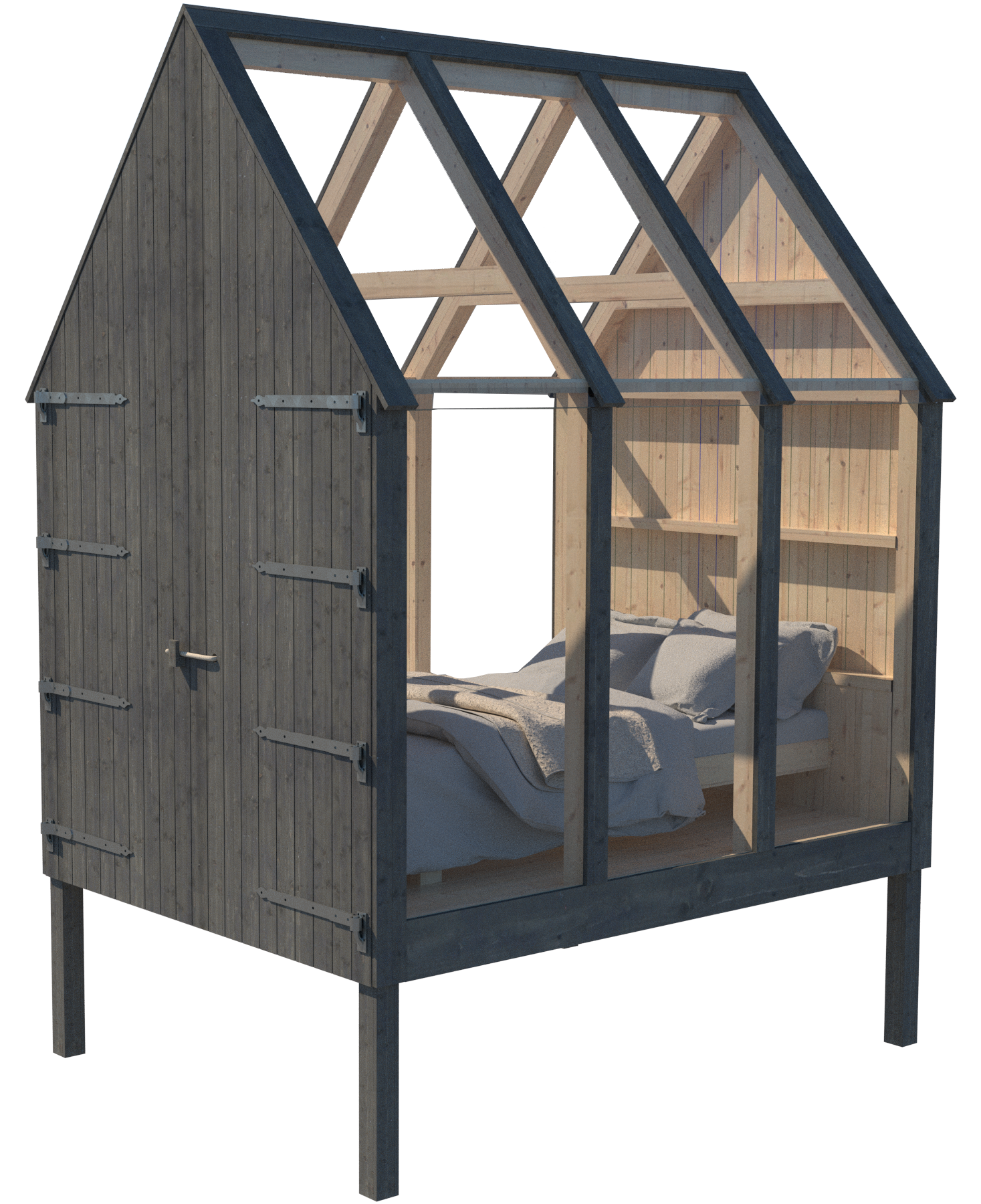According to Dr. Roger Ulrich, a Professor of Architecture at the Center for Healthcare Building Research at the Chalmers University of Technology in Sweden, we have an innate preference to have a view of our surroundings, preferably a natural environment. Although the complex settings that we typically dwell in might make us more stressed, the reason for this stems from an evolutional perception. Environments that are too wild are unsettling and feel overwhelming since we can’t predict the threats they impose. Instinctively, we require a clear exit. By offering a form of rationality in the structure of the 72-hour cabin, along with a distinct exit, the building attends to our deep innate needs.

The idea behind The 72 Hour Cabin was to create a physical place for Shirin Yoku. This is Japanese for ‘forest bathing’, a comfortable and shielding place to indulge in the site's natural environment. A bed dominates the interior space as a manifestation of the word ‘rest’. The bed is elevated by the same pillars that carry the ceiling, thus, lifting the inhabitants from all the worries of the ground below and taking them a little closer to the sky above.
The pillars are made of wood and can be cut on-site to adapt to any terrain. The foundation is minimal so that when the cabins are moved, there is no damage to the ground and the natural environment can easily retake the site.